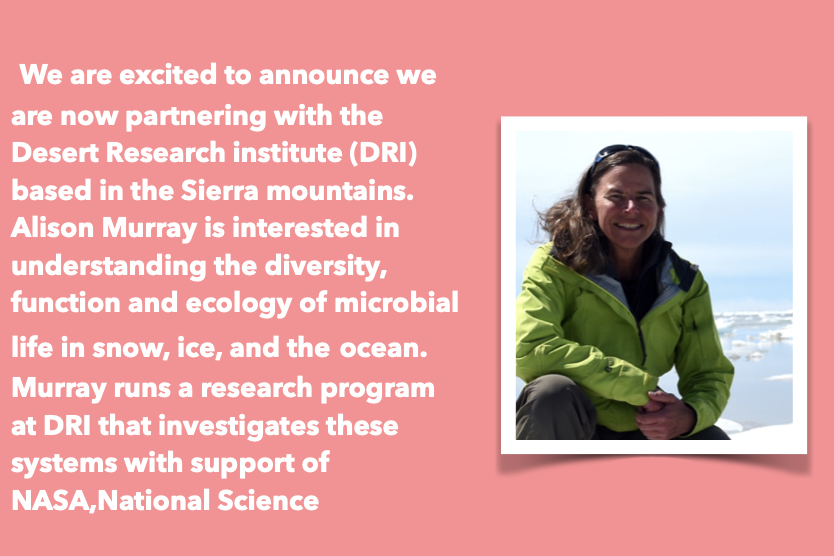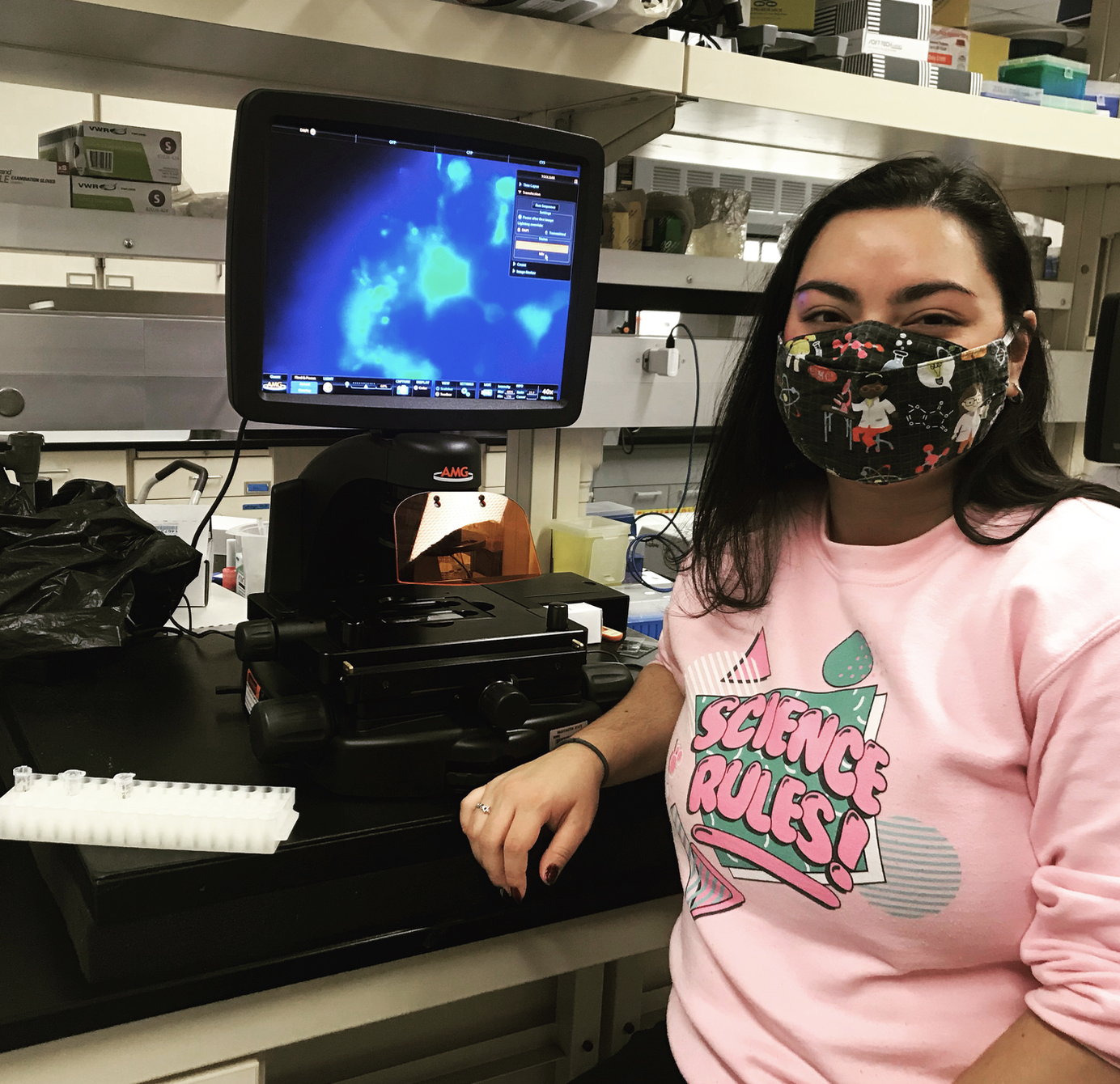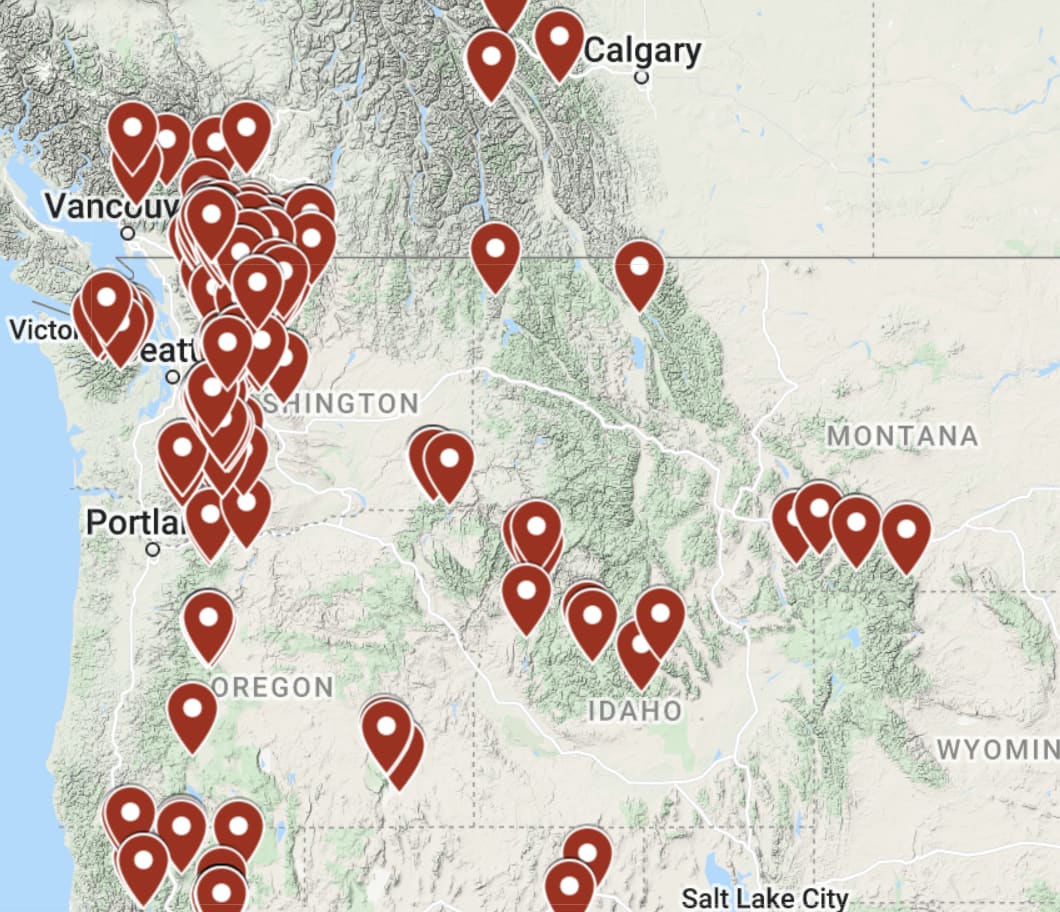Wired Magazine, and several other news sources syndicated an article written for High Country News, covered a story about snow algae, and gave a shot out to the Living Snow Project!
We take issue with the article's title, Pink Snow Is Not a Cute Phenomenon—Here’s Why, because we do think it's cute (see images below). But it is true, excessive snow algae blooms have the potential to drive increases in snow melt and add a stressor to issues with glacier melt and water resources.
 Image from LSP sample 22 - 0292. We do think these guys are quite cute! Photo: Clare Hanneman.
Image from LSP sample 22 - 0292. We do think these guys are quite cute! Photo: Clare Hanneman.
Dr. Kodner was selected for funding for a new snow algae physiology research project, through new NSF Mid-Career Advancement Program (MCA).
The MCA supports opportunities for scientists and engineers at the associate professor rank (or equivalent) to substantively enhance and advance their research program through synergistic partnerships. This award provides protected time, resources, and the means to gain new skills through synergistic and mutually beneficial partnerships.
Dr. Kodner will partner with Dr. Jodi Young at the University of Washington, an algal physiologist studying ice algae in Antarctica. Together, we will be comparing how snow algae respond to seasonal changes in the environment with how ice algae respond to polar night and the transitions to spring.
 Graduate student Rachel Liu (Young Lab, UW) and undergraduate Clare Hanneman (Kodner Lab, WWU) work together on a pilot project in Washington Pass July, 2022.
Graduate student Rachel Liu (Young Lab, UW) and undergraduate Clare Hanneman (Kodner Lab, WWU) work together on a pilot project in Washington Pass July, 2022.

Dr Kodner, along with colleagues from the University of Minnesota and the University of Alabama - Birmingham have received a grant from National Science Foundation to develop tools for studying microbial evolutionary genetics. The samples collected from the Living Snow Project provide an amazing resource to support this work. NSF EAGER grants are used “to support exploratory work in its early stages on untested, but potentially transformative, research ideas or approaches.” Together, they will develop a novel, single-cell population genetic method, combining the latest in single-cell sequencing and genotyping pipelines for non-model taxa using a species of snow algae — a closely related, single-celled algae that live on snow and glaciers. The team believes this project could lead to a breakthrough in the study of the evolution of microscopic life. Many organisms are microscopic and cannot be grown under lab conditions, which makes performing more traditional population genetic field and lab work challenging. By approaching microbial population studies in the field versus artificial lab conditions, the team believes they will get a more accurate picture of how snow algae populations are evolving over time, in relation to changes in snowpack. This grant will be focusing on the Chlainomonas species collected in the Bagley Basin, but Living Snow Project volunteer collected samples have identified other sites in which we can collect this interesting species.
 NSF Fellow Maya Matsumoto imaging algae with the fluorescence microscope.
NSF Fellow Maya Matsumoto imaging algae with the fluorescence microscope.
We have added all our 700+ samples collected over the past 8 years to a map. You can look around and see who has helped collect and where samples are collected. Last year, through a partnership with the Desert Research Insitute in Reno, NV, we had a dedicated program launch in the Sierra Nevada mountains. This year we are working on expanding to other states in the mountainous west were we would like to increase our sampling coverage.
